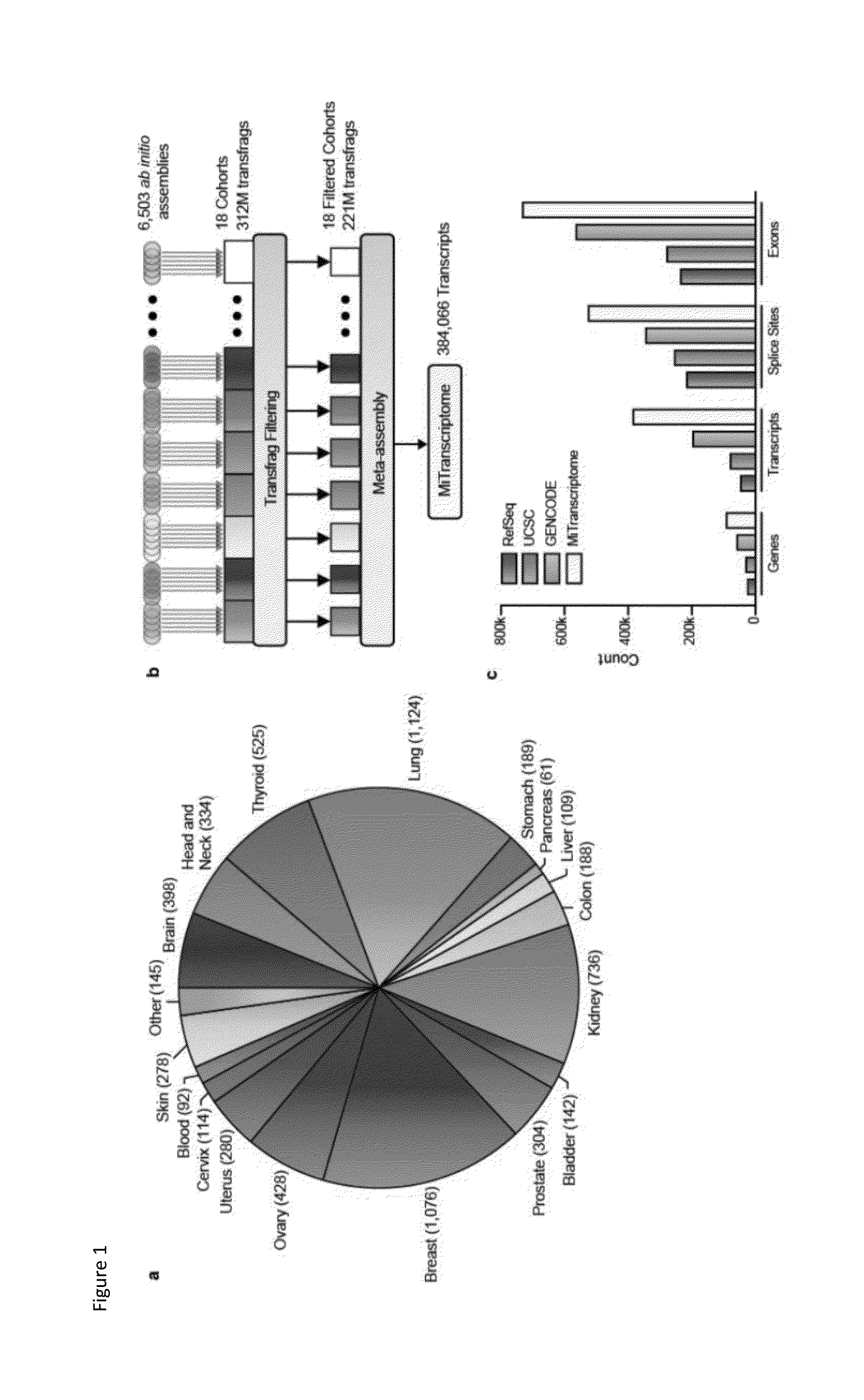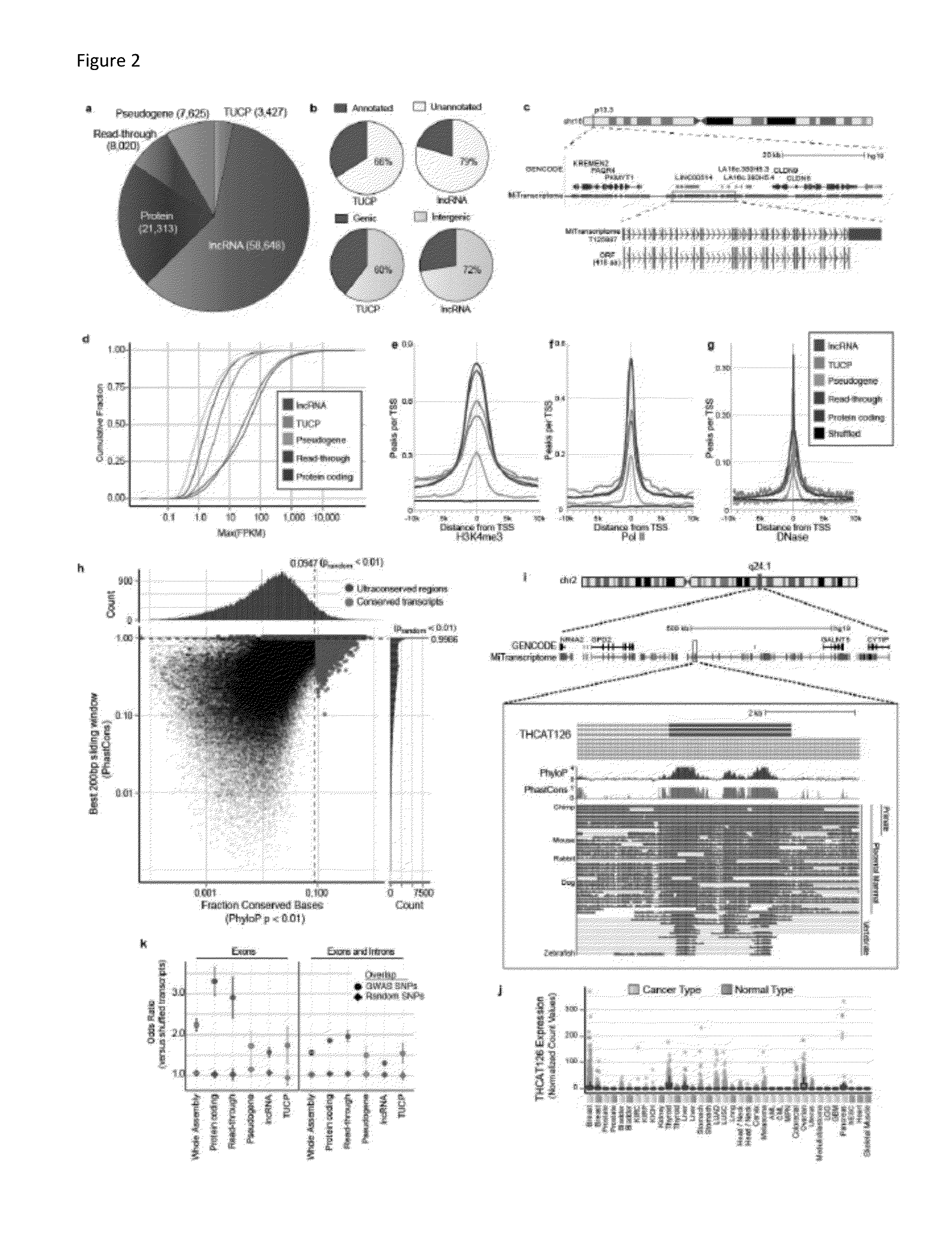Non-coding rnas and uses thereof
a cancer marker and non-coding technology, applied in the field of cancer diagnosis, research and therapy, can solve the problems of lack of prostate cancer sensitivity and specificity of serum psa test, and the impact of psa screening on cancer-specific mortality
- Summary
- Abstract
- Description
- Claims
- Application Information
AI Technical Summary
Benefits of technology
Problems solved by technology
Method used
Image
Examples
example 1
Methods
[0232]Computational analysis was performed using the Flux high-performance computer cluster hosted by the Advanced Research Computing (ARC) at the University of Michigan.
RNA-Seq Data Processing
[0233]A comprehensive RNA-Seq analysis pipeline was employed on all samples (FIG. 5b). The analysis pipeline provided sequence quality metrics, filtering of contaminant reads, fragment size estimation, strand-specific library type estimation, spliced alignment of reads to the human reference genome (version hg19 / GrCh37), alignment performance metrics, generation of visualization tracks for genome browsers, and ab initio transcript assembly. The third-party tools used to process RNA-Seq data were selected based on computational performance, ease-of-use, user and community support, and experience.
[0234]Software versions were managed effectively using the Modules Environment Management system. Computational analysis was performed in a 64-bit Linux environment (Red...
PUM
| Property | Measurement | Unit |
|---|---|---|
| mass error | aaaaa | aaaaa |
| PSA | aaaaa | aaaaa |
| transrectal ultrasound | aaaaa | aaaaa |
Abstract
Description
Claims
Application Information
 Login to View More
Login to View More - R&D
- Intellectual Property
- Life Sciences
- Materials
- Tech Scout
- Unparalleled Data Quality
- Higher Quality Content
- 60% Fewer Hallucinations
Browse by: Latest US Patents, China's latest patents, Technical Efficacy Thesaurus, Application Domain, Technology Topic, Popular Technical Reports.
© 2025 PatSnap. All rights reserved.Legal|Privacy policy|Modern Slavery Act Transparency Statement|Sitemap|About US| Contact US: help@patsnap.com



